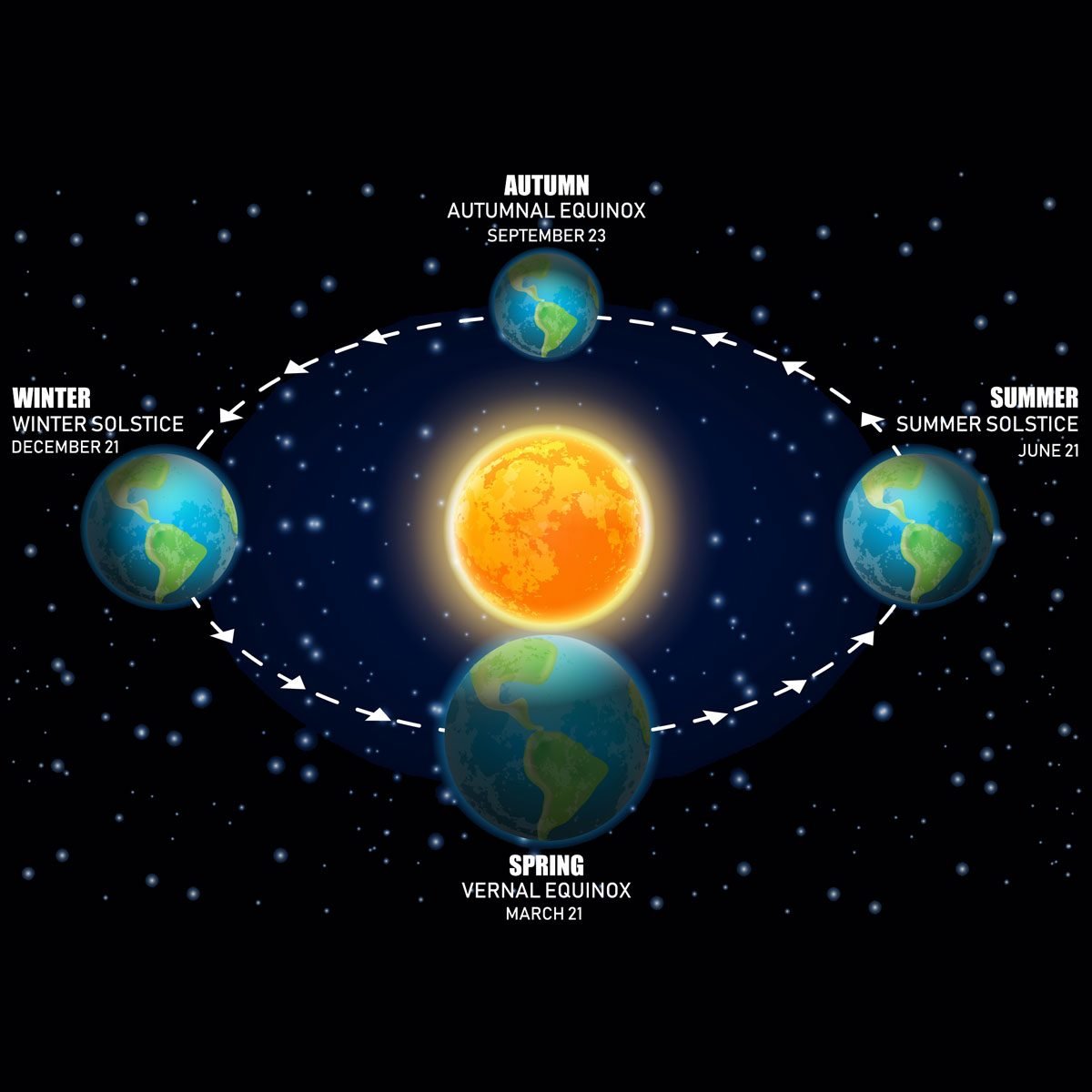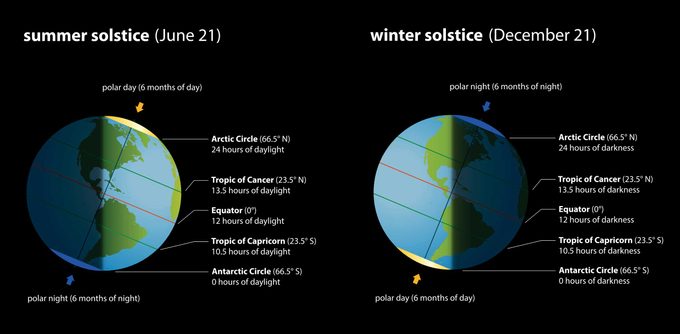We may not specifically celebrate the winter solstice today, but some of our favorite winter holidays surround the annual event.

8 Facts About the Winter Solstice You Need to Know

On This Page
What Is a Solstice?
As the Earth circles the sun, our days change in length. The seasons shift, too. This handy worksheet from NASA’s Earth Observatory explains that Earth is tilted 23.5 degrees on its axis, so the sun’s strongest rays shine on either the Tropic of Cancer or the Tropic of Capricorn depending on the Earth’s position. The winter solstice is the day with the least amount of sun, while the summer solstice is the day with the most.
When Is the Winter Solstice?
In 2020, the winter solstice falls on December 21. There is very little variation in the winter solstice’s timing. The Farmer’s Almanac explains that the date is always December 21 or 22.
What’s the Difference Between the Summer and Winter Solstice?
This depends on where you live. In the Northern Hemisphere, we call the December solstice the winter solstice. What that really means is the sun is at its southernmost position, according to NASA’s Jet Propulsion Laboratory. The June (or summer) solstice happens when the sun shines directly on the Tropic of Cancer. The December (or winter) solstice happens when it shines on the Tropic of Capricorn. This is why the Northern and Southern Hemispheres have opposite seasons.

Is the Winter Solstice the Shortest Day of the Year?
Yes, the winter solstice is the shortest day and longest night in the Northern Hemisphere. The National Weather Service says that the Earth’s tilt toward the sun is at a minimum “when the sun is directly over the Tropic of Capricorn, which is located at 23.5 degrees south of the equator.”
What Is the Equinox?
An equinox is similar to a solstice. These events occur in March and September. At these times, the Earth is angled 90 degrees away from the sun, giving roughly equal amounts of sun to both hemispheres, says the Smithsonian Science Education Center. This accounts for the other two seasons: spring and fall.
Winter Solstice Historical Significance
Some ancient winter solstice traditions are still common today, but their roots are long forgotten. The United States Forest Service reminds us of a few holiday favorites that stem from the winter solstice, starting with the holly tree. Holly’s evergreen appearance made it a sacred symbol of the summer solstice, so it was used as a winter decoration and a reminder of the Earth’s beauty. Yule logs, mushroom tree ornaments and strings of popcorn or cranberries may also come from winter solstice celebrations of the past.
How Is It Celebrated?
Many winter holidays happen to fall around the winter solstice. Christmas, Hanukkah and Kwanzaa are perhaps the most well-known winter celebrations, but there are many more around the world. For example, Yale University describes winter solstice celebrations among the Hopi people of Arizona, as well as the Hawaiian Makahiki festival. These celebrations often feature customary foods and shared meals.
What’s the Deal With Stonehenge?
Stonehenge was built to track the movement of the sun. The stones were erected, says English Heritage, so that they would frame the winter solstice sunset and the summer solstice sunrise. Tourists flock to the monument to watch the sun shine through its pillars on these events.


















